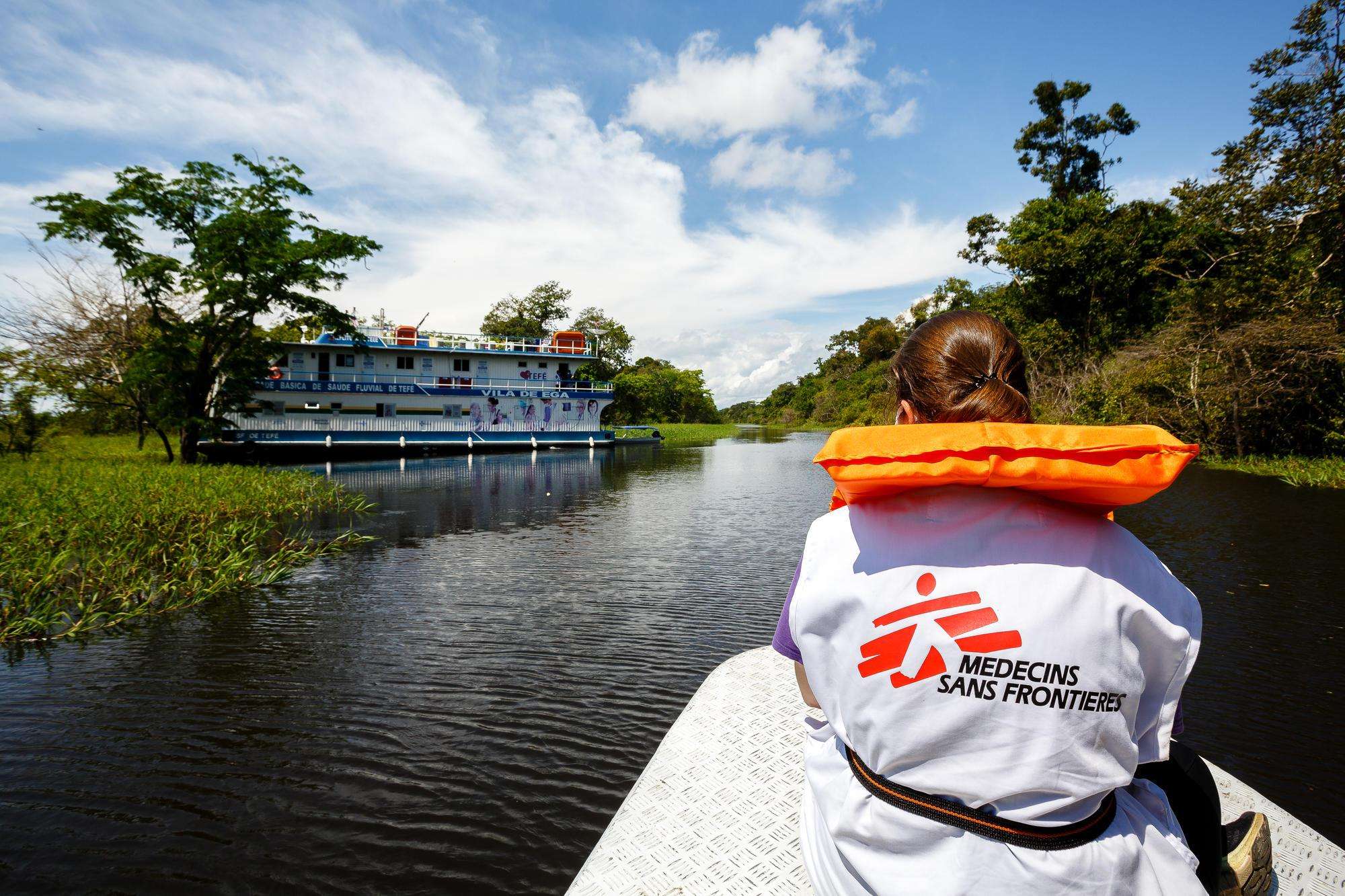With more than three million confirmed cases of COVID-19, Brazil now has the second-highest number of cases worldwide, trailing only the US. The country’s massive size and lack of transportation across huge swathes of territory have complicated the response to the pandemic, prompting Doctors Without Borders/Médecins Sans Frontières (MSF) to launch an intervention in Brazil’s Amazonas state.
“We had COVID-19 response teams in Rio de Janeiro and São Paulo, and then the bad news started coming from the interior,” said Antonio Flores, medical coordinator for the MSF team that came to Manaus, the capital city of Amazonas state, in April 2020. “When I arrived in Manaus, the grave diggers were working beyond capacity, all the hospital intensive care units (ICUs) were overflowing with dying patients, and there were lists with hundreds of severely sick people waiting in health centers for an intensive care hospital bed to become free. It was worse than we had feared.”
The limited COVID-19 testing deployed by Brazil’s government made tracking the pandemic’s spread across this vast country difficult. It was even harder in the Amazon basin where transportation options are limited and communities often live far apart. In addition, the antibody tests being used showed if patients had recovered from the disease, not if they currently had COVID-19. This epidemiological data gave a rough snapshot of what the situation was like three weeks ago, rather than a current view of the state of the pandemic.
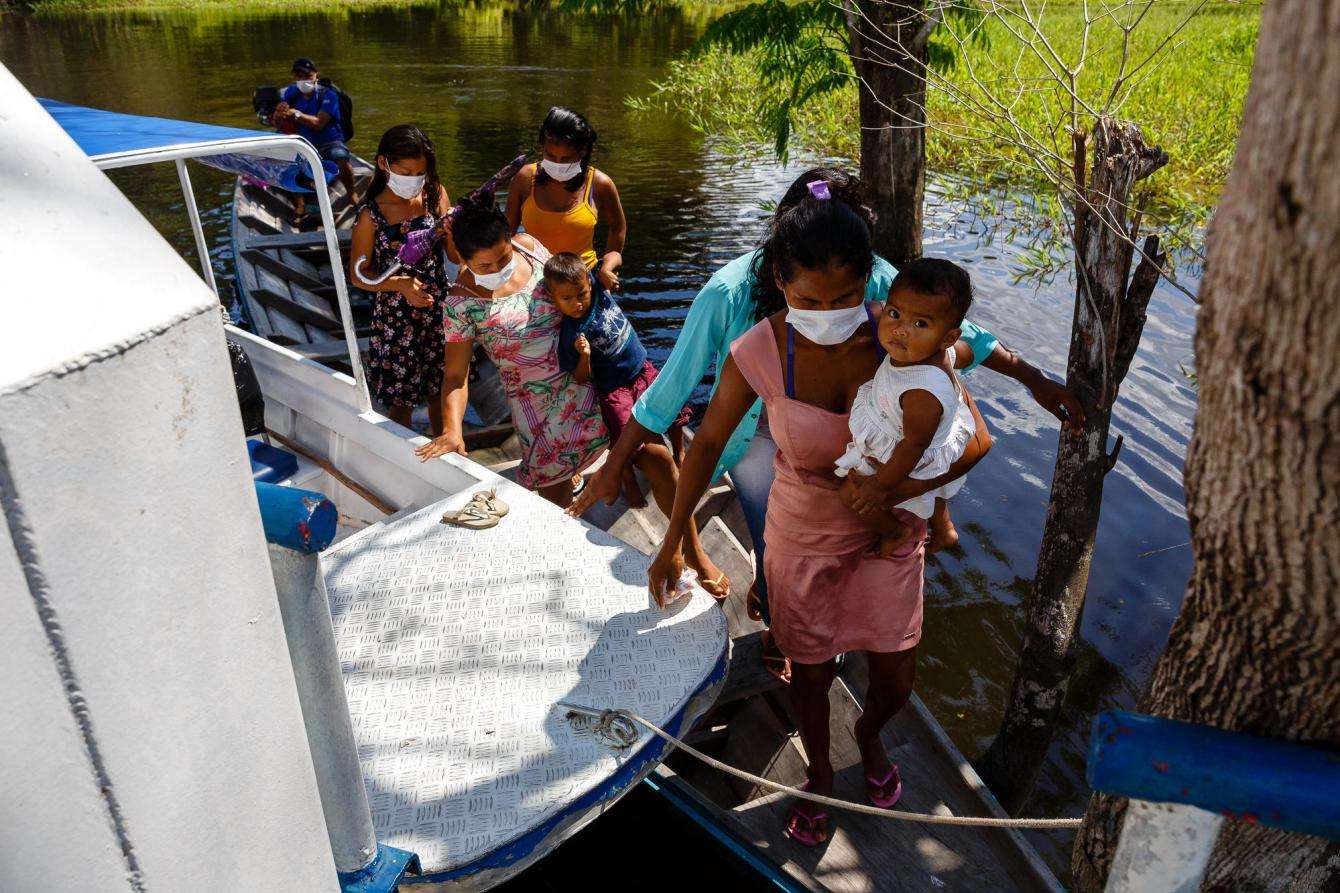
“We were able to get an ICU ward up and running relatively fast,” said Flores. “It was initially operating at full bed capacity, but we felt that the worst had probably already happened.”
By early May there was a range of MSF activities in Manaus, which has many at-risk groups including refugees and homeless people. Most of these people stay in shelters where physical distancing is nearly impossible. The situation of the Warao indigenous people, who came to Brazil from Venezuela, was of particular concern because of crowded living conditions. MSF set up an isolation center for this community for anyone showing symptoms of COVID-19.
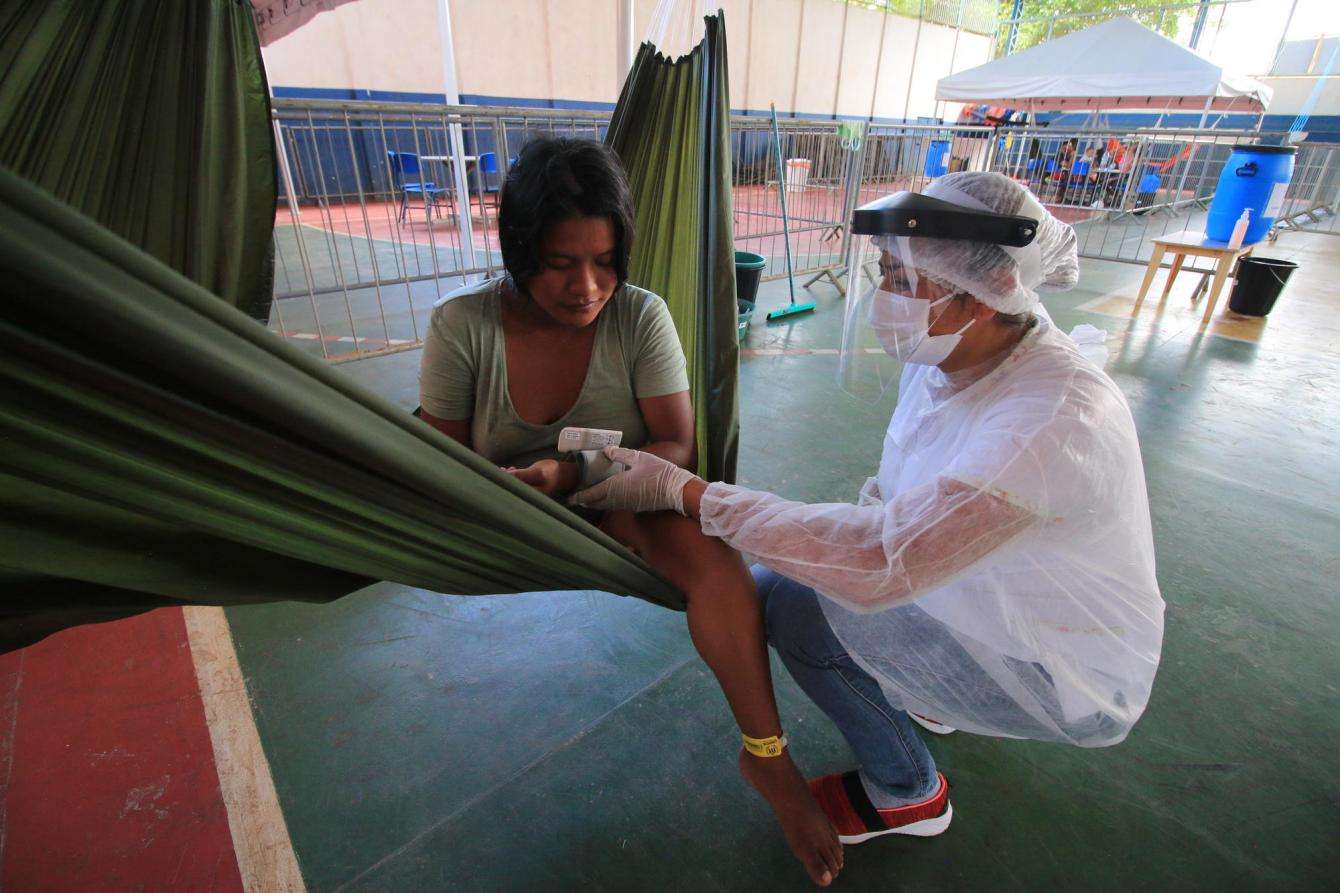
Our response in Manaus focused on medical support in one of the city’s main hospitals, called 28 de Agosto. We took over management of the fifth floor, which houses a 12-bed ICU for critically ill patients and a 36-bed ward for severe patients. Even after the overwhelming pressure of the initial peak of COVID-19 cases had passed, the wards were all full. MSF’s emergency experience helped the rest of the hospital to improve patient flows and increase the quality of care.
“Arriving at the hospital, we faced a scenario familiar to anyone who has worked in Brazil’s national health system: a precarious structure that’s working at its limit,” said Doctor Pedro Cury Moyses, who was part of the response.
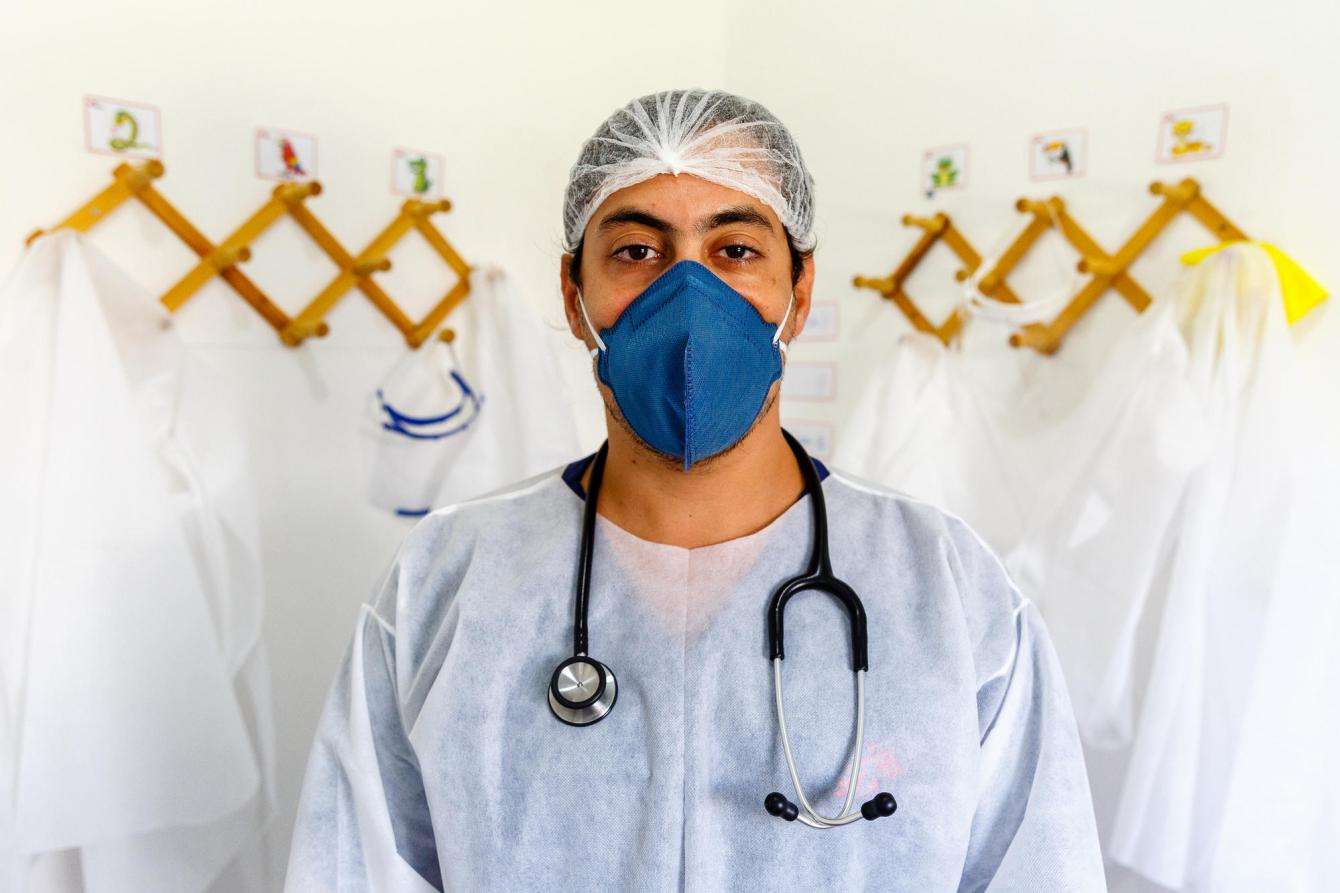
“But I have good memories of the discharge of a patient who was admitted to the ICU. When I first met her, she was obviously scared, mainly because she had a slow and complicated recovery. She had underlying medical conditions as well as COVID-19, and that complicated her case. Finally, when she was well enough to leave the hospital, we organized her departure. In a wheelchair, she was surprised by the ICU and ward staff applauding her in the corridor—and, at the end of it, by the sight of her husband who was waiting for her with a bouquet of flowers. She was the greatest symbol of our work in this Manaus hospital. Restoring her to life helped to restore hope to the doctors there, who had witnessed devastatingly high mortality rates throughout the pandemic.”
Into the Amazon rainforest
In Manaus, the waters of the Negro and Solimões rivers meet, forming the colossal Amazon river. As the number of COVID-19 cases peaked and then stabilized in the state’s capital, the disease was silently spreading upriver and into the rainforest.
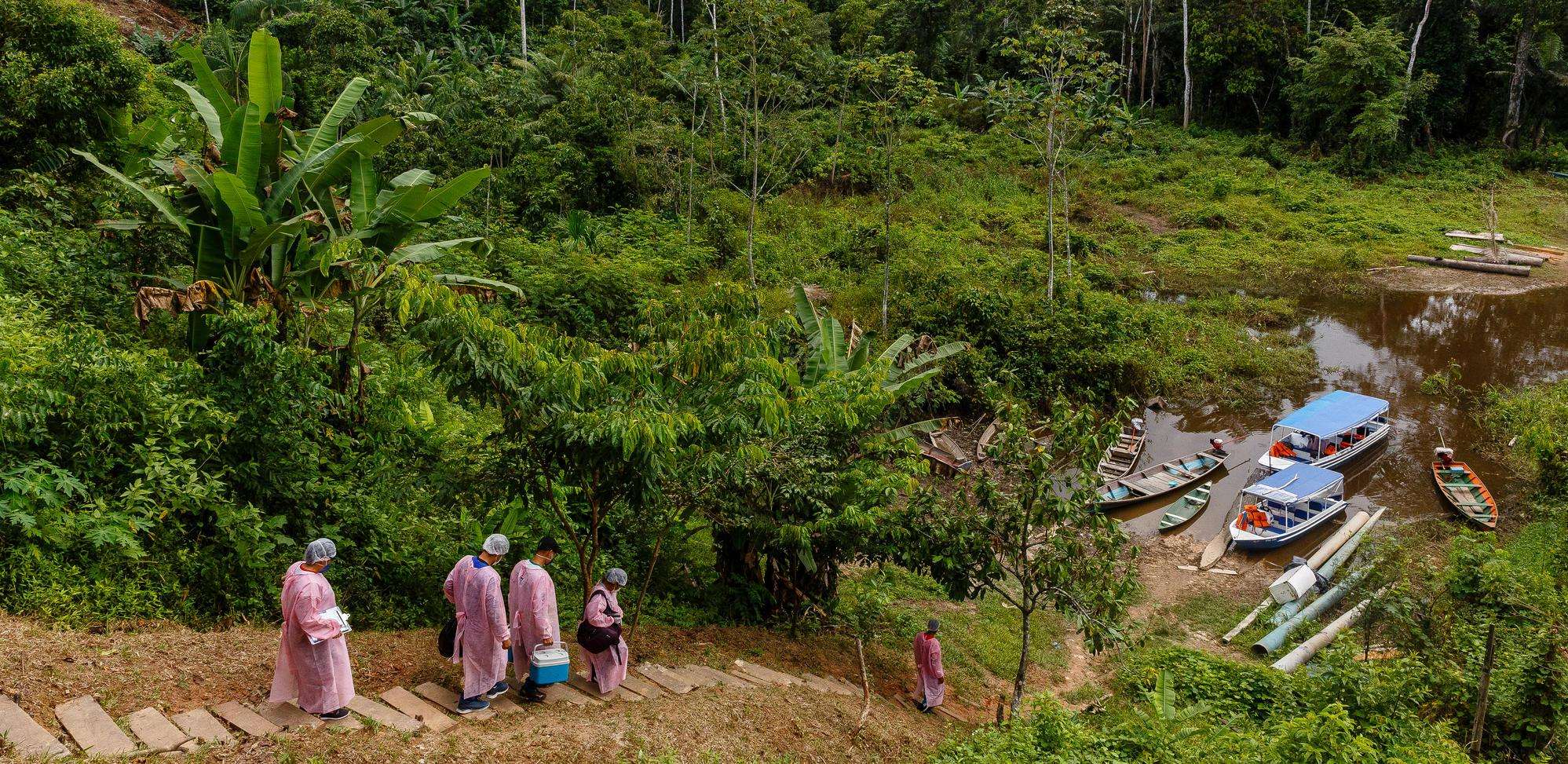
“At first there were infrequent one-off calls of alarm about COVID-19 cases coming from remote and riverside communities in the Amazon basin,” said Dounia Dekhili, MSF’s head of mission in Brazil. “For many years there has been a significant underinvestment in health and welfare infrastructure and resources in this region.”
The sheer size of the region and shortage of transportation options complicated epidemiological work and referrals for patients in need of advanced care. “We knew we needed to better understand the epidemic situation in the forest, but this is a very vulnerable and sensitive area,” said Dekhili. “There was a need to ensure COVID-19 treatment capacity accessibly close to the riverside and indigenous communities, but there was also a need to avoid bringing the disease right into the heart of these communities.”
It can take two or three days by boat up the Solimões river to reach the Tefé municipality, home to some 60,000 people and one of the towns in the region worst-affected by the pandemic.
“When the first case with hospitalization was confirmed, the whole team was already alert and afraid,” said Tayana Oliveira Miranda, director of Tefé’s regional hospital. “We started to withdraw the elderly, pregnant, and chronically ill staff from the team. Then, it started to overwhelm those who stayed to work. The number of hospitalized patients began to increase. Then we had the first death. The staff on that shift were devastated. And the pressure was increasing.”
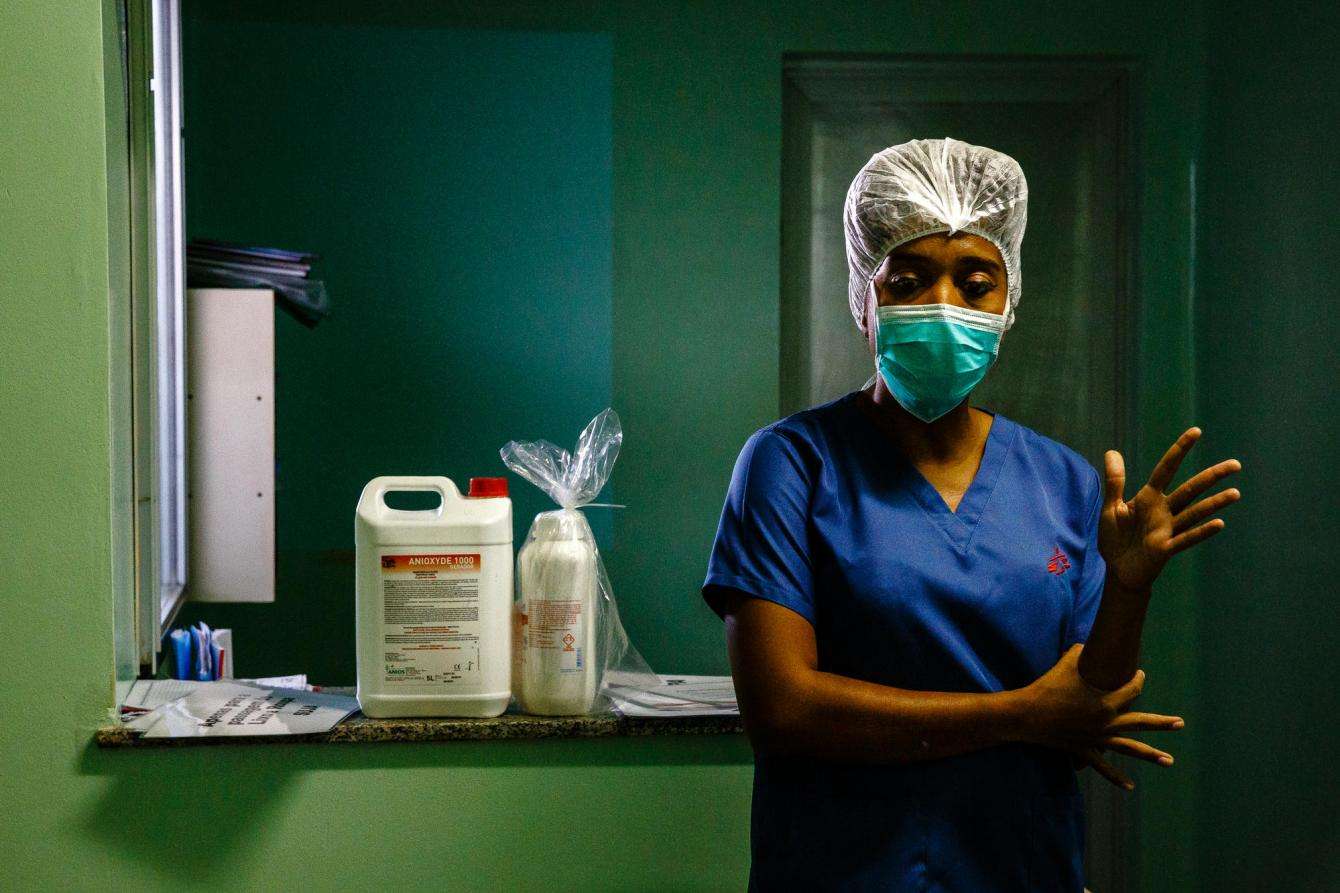
Over the course of May, the number of cases and hospitalized patients continued to rise—as did the number of deaths and hospital staff falling ill. “We changed [patient] flow, we brought the COVID-19 ward into the hospital because there was no more space due to the number of patients,” said Miranda. “Chaos was beginning to take over. The peak was on the day that we had 41 people hospitalized, six intubated, and the demand for air ambulances for the entire state was very high. That day there were nine deaths. The team suffered a lot. The doctor on duty broke down in tears, the team did not eat—it was a horrible day and I dare to say that no one could eat and sleep that night.”
When MSF arrived in the city, the number of patients had stabilized to a more manageable level. The hospital team requested training to prepare for the possibility of a new wave of infections, or another crisis that could cause a mass influx of patients. More than 200 medical and paramedical staff attended the MSF training at the regional hospital in Tefé.
The boat clinic
In Tefé a primary health care boat brings basic medical services, making a two-week voyage that includes several stops to assist people living on the riverside. Nova Sião, one of the last communities served by the boat before it returns to Tefé, is on the shore of Lake Mirini. Here, the health team takes smaller boats from house to house, giving medical consultations.
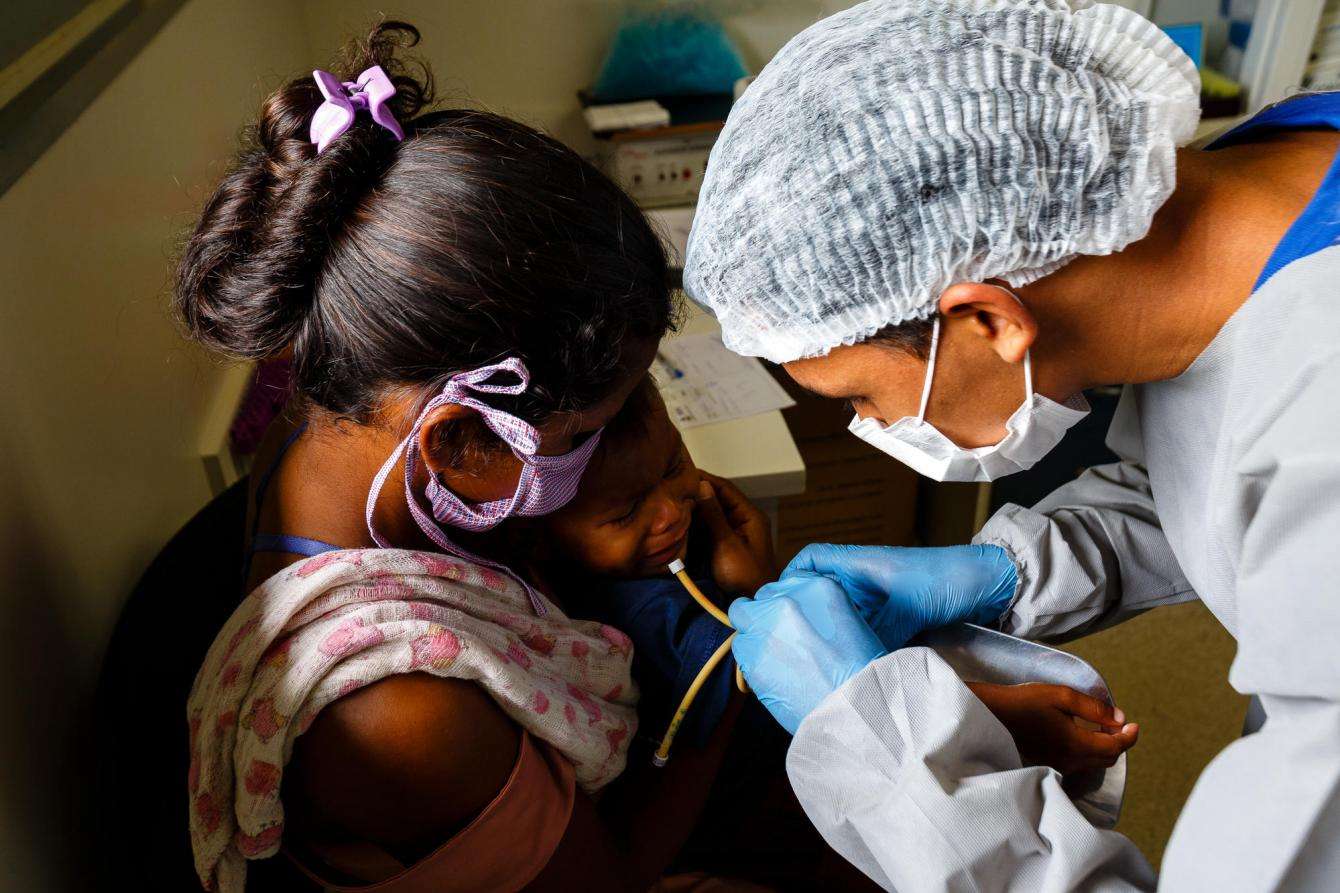
“We knew we were getting closer to very vulnerable communities,” said MSF nurse Nara Duarte. “So it was vitally important to prevent patients and health staff from becoming contaminated during consultations. MSF asked to help with the infection control on the first boat clinic after lockdown, as we felt this would be an important part of helping to minimize the risk of the disease spreading into the most vulnerable communities.”
The MSF infection control team spent their time on the boat developing a circuit through which people could safely enter, pass, and exit when they arrived for consultations. In the evenings, after the consultations had finished, the team gave the regular boat clinic staff and crew additional trainings on infection prevention and control measures and emergency respiratory care.
“I learned a lot about communication and knowing how to listen better to the patient,” said Jhonaliton de Freitas da Silva, a nurse on the medical boat who received training from the MSF team. “Sometimes we ask the reason for the consultation, but do not go further to find out if there are other problems. I learned to do that.”
Adapting to community needs
More than 400 kilometers [about 250 miles] to the northwest, on the Negro river, is the municipality of São Gabriel da Cachoeira. Here, MSF set up a care center to receive patients suffering from mild and moderate cases of COVID-19. More than 90 percent of the people in São Gabriel da Cachoeira are of indigenous origin, so the facility was specifically adapted to suit local traditions.
Vilmar da Silva Matos is a Yanomami indigenous leader who occasionally travels from his community, Maturacá, to the city of São Gabriel da Cachoeira. “We thought we were lost. We were especially concerned with the elderly,” he said. “We were afraid of losing our leaders—who are like our dictionaries, our storytellers.”
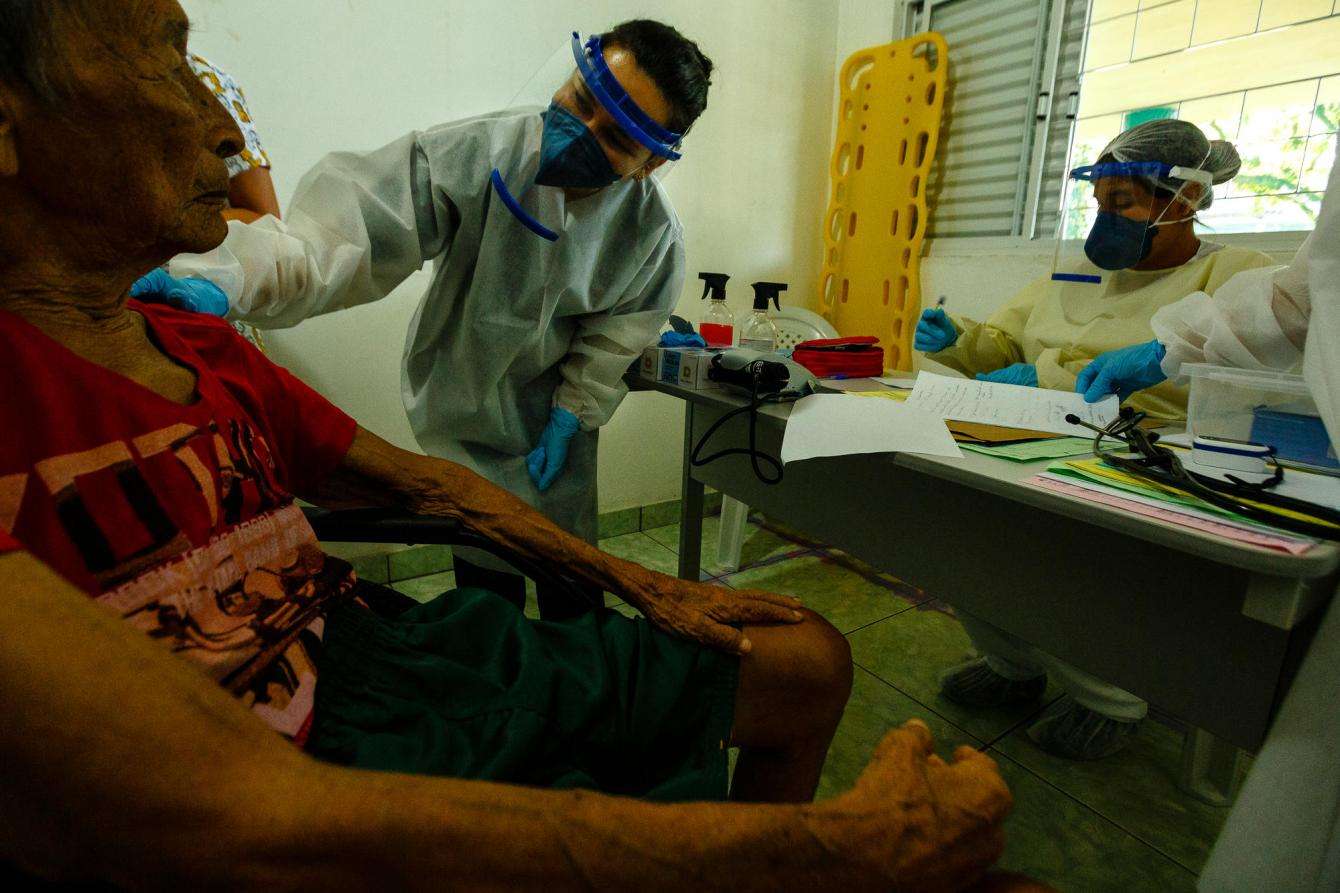
In the MSF care center, indigenous patients with COVID-19 can stay with a caregiver on hand for the duration of treatment, something that is not usually allowed in hospitals. Hammocks are available for patients and companions. In addition, traditional medicines used by many people in the region are accepted at the center and can be taken together with treatments offered by MSF, as long as their combination does not cause any adverse effects. Shamans, spiritual leaders of indigenous communities, can visit and perform rituals. The only requirement is that they use personal protective equipment.
It was also important that everyone knew where they could find assistance tailored to their needs. MSF met with leaders and organizations linked to indigenous communities. Our staff also participated in radio transmissions broadcast in indigenous villages in order to respond to questions coming directly from the communities.
An uncertain future
In Amazonas state, as in much of the rest of the world, the path to the end of the COVID-19 pandemic is still unclear. One of the few certainties is that preventive measures such as physical distancing, wearing a mask, and hand hygiene remain essential.
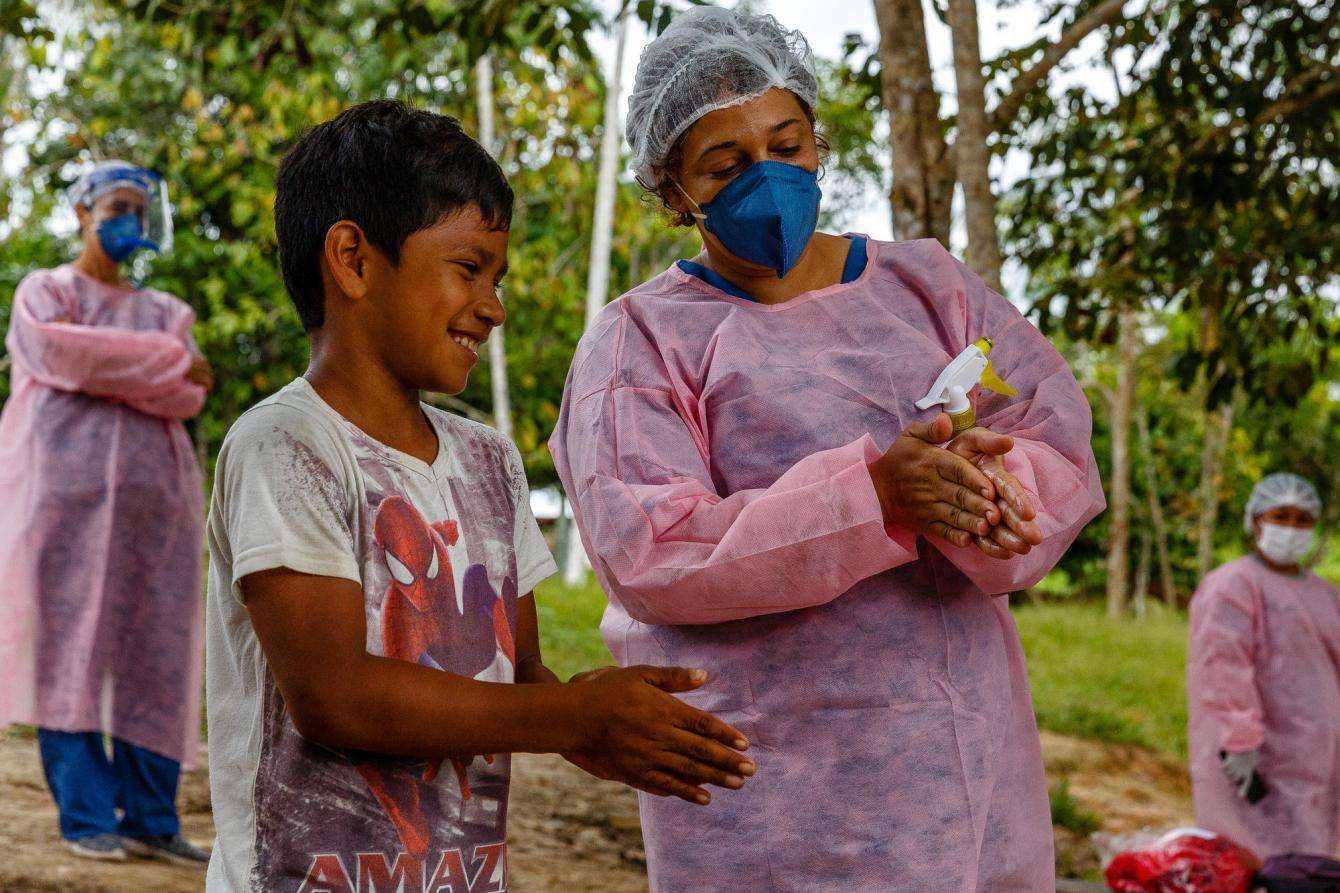
“We hear that the pandemic is over in Amazonas state and that it was just a matter of waiting to achieve ‘herd immunity’,” said Flores, the MSF medical coordinator. “This idea is absurd because it ignores that with a greater number of infected people we are also talking about a greater number of deaths. We saw the health system collapse and the enormous cost for the population of not having a timely response that could control the spread of the disease.”
While official numbers of new cases are beginning to decline in the state, there is no clear information about what is happening in the interior of the country. It is feared that the disease could continue to spread silently to more remote areas that have even more limited access to medical care.
Keeping COVID-19 from spreading across the Amazon is fundamental to saving lives, respecting the dignity of the communities affected, and protecting the irreplaceable knowledge of generations.
In addition to our work in Amazonas state, MSF is also responding to an acute peak of COVID-19 in Roraima state, running an ICU unit and developing community outreach in a suburb of eastern São Paulo. We have formed a team dedicated to identifying high-transmission pandemic hotspots elsewhere in the country that need medical assistance. We have handed over earlier COVID-19 activities to other organizations in Rio de Janeiro and central São Paulo.
